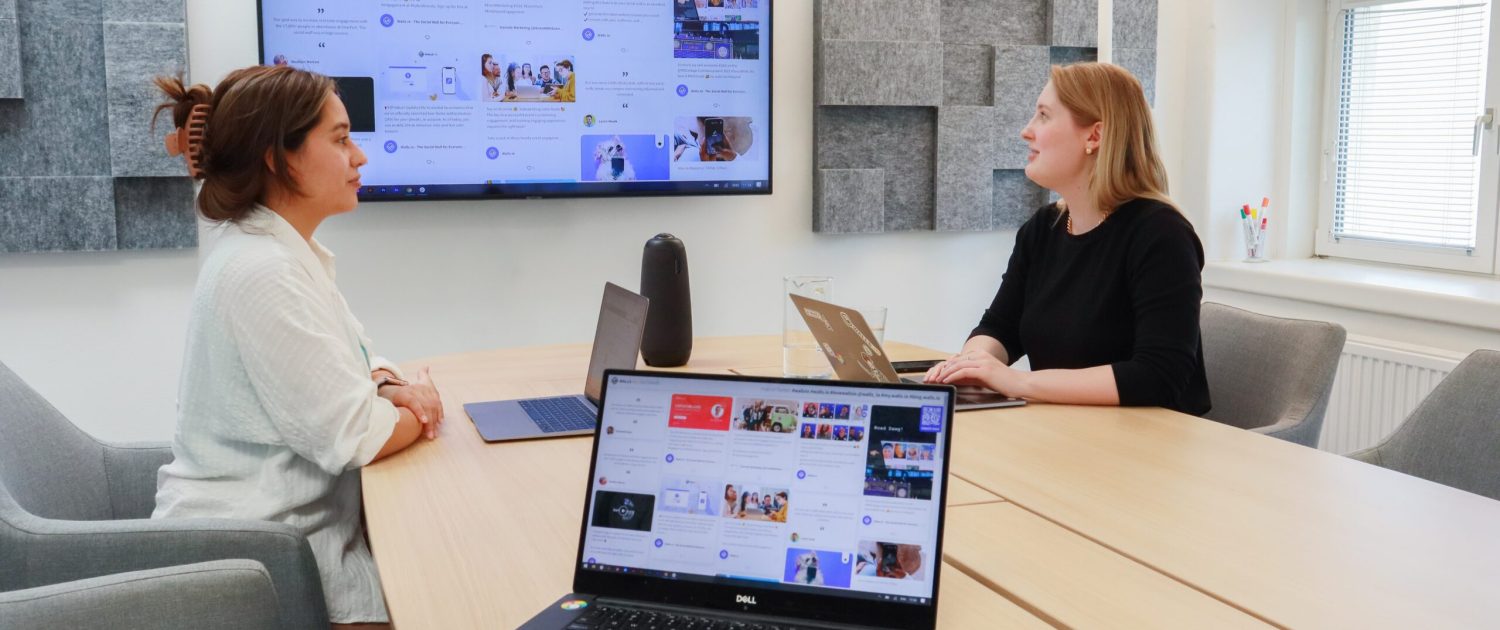The Future of Meeting Rooms: Digitalization and Beyond
The Future of Meeting Rooms: Digitalization and Beyond
Meeting rooms are an essential part of any business. Whether it’s for brainstorming ideas, discussing projects, or just catching up with colleagues, having a dedicated space for meetings can be invaluable. As technology advances, meeting rooms are becoming increasingly digitized and more sophisticated.
The evolution of meeting rooms
Meeting rooms have come a long way since their inception. Initially, they were just plain, rectangular rooms with a large table and chairs arranged around it. But with the rise of technology, the concept of meeting rooms has been completely revolutionized.
Nowadays, modern meeting rooms are equipped with state-of-the-art technologies such as video conferencing, touch-screen displays, and high-quality sound systems. These technologies have transformed the way meetings are conducted, enabling participants to collaborate more efficiently and effectively.
Another significant change in the evolution of meeting rooms is the way they are designed. In the past, meeting rooms were designed for practicality, with little consideration for aesthetics. But now, meeting rooms are designed with creativity and innovation in mind, to create an environment that inspires collaboration and creativity.
One of the biggest drivers of change in meeting rooms is the trend towards agile and flexible working practices. With more and more companies adopting remote and flexible working arrangements, meeting rooms are now designed to facilitate virtual collaboration between remote workers.
Overall, the evolution of meeting rooms has been driven by the rise of technology, the need for more flexible working practices, and the recognition of the importance of creating inspiring spaces that promote collaboration and creativity. In the next section, we will look at how digitalization has further transformed meeting rooms and what the future holds for this important space.
How digitalization has changed meeting rooms
Gone are the days when meeting rooms were only used for traditional face-to-face meetings with a pen and paper in hand. The advent of digital technology has drastically transformed the way we conduct meetings today. With the integration of digital technology, meeting rooms have evolved into multifaceted and sophisticated spaces that offer endless possibilities.
One of the biggest ways digitalization has changed meeting rooms is through the introduction of high-tech equipment. From projectors to video conferencing equipment, the use of technology has transformed meeting rooms into a digital hub, enabling remote collaboration and increased productivity. Video conferencing equipment like Skype, Zoom and Teams, has allowed people to connect from different parts of the world without leaving their office space, making remote work a lot more accessible and practical. Additionally, digital whiteboards have replaced traditional ones, making it easier to collaborate on ideas and to capture notes.
Another way digitalization has impacted meeting rooms is by providing users with a plethora of data. The information obtained during meetings can now be recorded and analyzed using various digital tools, allowing managers to evaluate the effectiveness of meetings, set benchmarks and make better-informed decisions. Also, many companies have introduced scheduling software that allows individuals to book meeting rooms, order catering and keep track of events happening within the organization.
The integration of digital technology has also made meeting rooms more flexible. Previously, meeting rooms were designed to serve a specific purpose and were inflexible when it came to adapting to different situations. However, digitalization has changed this, and meeting rooms now offer more opportunities to switch things up depending on the need of the hour. Meeting rooms can be re-configured to allow for collaboration, brainstorming sessions, and private meetings, all within the same space.
What the future holds for meeting rooms
With digitalization transforming the way we work, meeting rooms have had to adapt and evolve to keep up with the latest technologies. But what does the future hold for these spaces, and how will they continue to shape the way we collaborate?
One trend we’re seeing in the future of meeting rooms is the rise of remote work. As more people work from home or on the go, meeting rooms will need to be equipped with video conferencing and other collaboration tools to connect remote teams. Virtual and augmented reality may also play a role in creating a more immersive experience for remote workers.
Another trend is the use of data analytics to optimize meeting spaces. Sensors and software can be used to track occupancy and usage patterns, allowing companies to better understand how their meeting rooms are being used and adjust their design and functionality accordingly. This could mean designing rooms that are better suited for brainstorming sessions or team meetings, or investing in technology that improves audio and visual quality.
As technology advances, meeting rooms may also become more interactive and customizable. Imagine walking into a room that automatically adjusts to your preferences, from lighting and temperature to presentation layouts and content. AI and machine learning could be used to personalize meeting experiences and make them more productive and efficient.
In the future, we may also see meeting rooms that are more sustainable and environmentally friendly. This could mean using renewable energy sources, recycling materials, and designing rooms that minimize energy consumption and waste.
Overall, the future of meeting rooms looks bright and exciting. As technology continues to evolve, these spaces will play a crucial role in helping us connect, collaborate, and innovate.
Conclusion
Meeting rooms have come a long way from their traditional roots of being just a space to gather and discuss ideas. With the advent of technology and digitalization, these spaces have transformed into high-tech hubs for collaboration, brainstorming, and presentations.
In the future, meeting rooms are expected to become even more advanced, incorporating augmented reality, artificial intelligence, and virtual assistants to enhance the overall experience. As workplaces continue to evolve, meeting rooms will undoubtedly play a pivotal role in facilitating communication and innovation.
So whether you are planning to host a team meeting, a board meeting, or a client presentation, you can rest assured that meeting rooms will continue to evolve and offer new opportunities for success.
Meet with the Pros!
At Toronto Meetings we can provide the perfect atmosphere for your next in-person meeting.
Our meeting and training rooms, which include the following technology amenities are fit for any after-hours get together.
- High Speed Wi-Fi
- 80″ OLED TVs
- Built-in presentation equipment
- Videoconference capabilities
- Conference Phones
These spaces, which range from one person all the way up to 60 people and include both waterfront and city views are sure to be a fit for you and your team.
With direct access to Union Station via the PATH network, our 20 Bay St location makes it easy for you and your guests to arrive at your meeting room without ever stepping outdoors. Daily and evening parking is also available for those choosing not to take public transit or who are coming from further areas in the GTA.
For more information about our spaces, as well as securing your next reservation, feel free to call 416-214-1840 or email meetings@rostiegroup.com.





